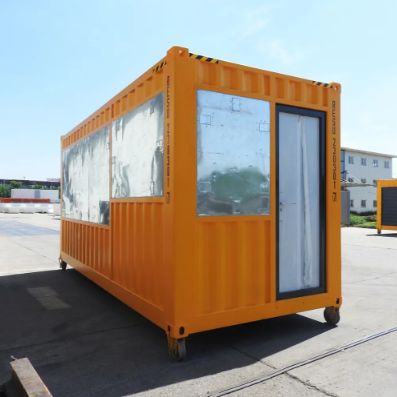
House Containers, also known as shipping Container homes, have become increasingly popular in recent years as a more cost-effective and sustainable alternative to traditional homes. These homes are created by repurposing used Shipping Containers, which are typically made of steel, into living spaces. While there are several advantages to choosing a house container over a traditional home, there are also some drawbacks to consider.
One of the main advantages of house Containers is their affordability. Constructing a home out of shipping containers can be significantly cheaper than building a traditional home. This is because the main structure of the home is already in place, reducing the need for extensive materials and labor costs. Additionally, the modular nature of shipping containers allows for easy customization and expansion, making it a cost-effective option for those looking to build a unique and personalized home.
Another benefit of house containers is their sustainability. By repurposing used shipping containers, these homes help reduce waste and promote recycling. Additionally, the steel construction of shipping containers makes them durable and resistant to natural disasters, such as hurricanes and earthquakes. This can provide homeowners with added peace of mind knowing that their home is built to withstand extreme weather conditions.
House containers also offer a quicker construction timeline compared to traditional homes. Because the basic structure of the home is already in place, the assembly process can be completed in a fraction of the time it would take to build a traditional home. This can be especially advantageous for those looking to move into their new home quickly or for those looking to minimize disruption to their daily lives during the construction process.
Despite these advantages, there are some drawbacks to consider when choosing a house container over a traditional home. One of the main concerns is the limited living space that shipping containers provide. While these homes can be customized and expanded to some extent, they typically offer less square footage than traditional homes. This can be a challenge for those with large families or those looking for ample living space.
Another drawback is the insulation and ventilation issues that can be present in house containers. Shipping containers are made of steel, which can make them prone to extreme temperature fluctuations. Without proper insulation and ventilation, these homes can be hot in the summer and cold in the winter. This can result in increased energy costs and discomfort for the occupants.
In conclusion, house containers offer a cost-effective and sustainable alternative to traditional homes. They are quick to construct, customizable, and durable. However, they also come with limitations, such as limited living space and insulation issues. Ultimately, the decision to choose a house container over a traditional home will depend on individual preferences, budget constraints, and lifestyle needs.




Comment
(0)